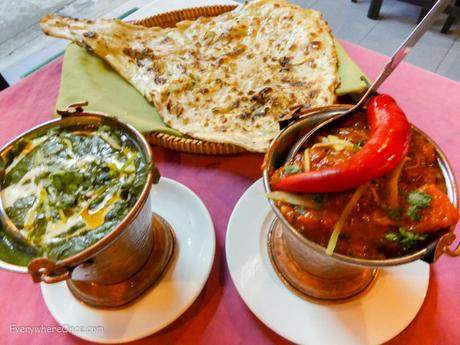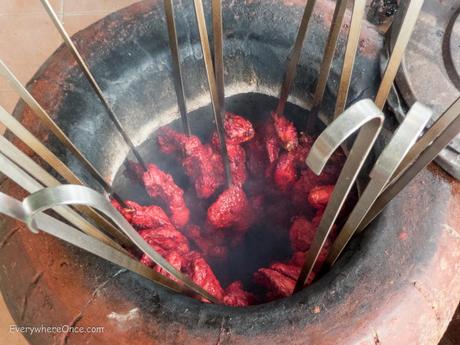
“Amp-ah-nada? What’s that?” asked a grandmotherly woman about the delectable little filled pastries so popular throughout Latin America. Her skeptical sneer told me she wouldn’t discover the delights of empanadas anytime soon, or probably ever.
That reluctance to experiment with new foods is a leading reason why foreign cuisines take so long to find a foothold. People who don’t grow up eating certain foods are unlikely to change their eating habits as adults. That’s especially true for those who live in rural areas with limited ethnic and culinary diversity. It’s not only that they might not sample new foods, they might not even be exposed to them.
But those factors by themselves don’t explain why Indian food has taken so long to gain acceptance in the U.S. According to a Washington Post article purporting to solve that mystery, “there are, after all, more than 40,000 Chinese restaurants around the country, and roughly the same number of Mexican restaurants, but only about 5,000 Indian restaurants.” Why?
The popularity of Mexican food in the U.S. is completely understandable. We share a long border with that country, and people of Mexican heritage account for around 10% of the U.S. population. But what about China? The U.S. is about as far removed from China as it is from India. The number of Chinese Americans only slightly exceeds those of Indian descent (3.8 million and 3.2 million, respectively.) Why, then, is Chinese food served in eight times as many restaurants as Indian food. It’s certainly not because Chinese cuisine is tastier. Not by a long shot.
The answer, according to the Washington Post, is that Americans are simply too cheap to pay for Indian food.
They almost certainly have a point. Indian food is by far the most labor intensive of any of the kinds of foods we cook for ourselves. Our favorite Indian dish to make at home takes two days to prepare with about five hours of active cooking and chopping time. It also requires the most ingredients of anything we cook – 19 in total. Our favorite Chinese dish, meanwhile, takes us about 45 minutes to throw together.

Deeply spiced, marinated chickens baking in a tandoori oven
Clearly if we were running a restaurant, we’d need to charge significantly more for our Indian dishes than for our Chinese ones. There’s only one small problem. People aren’t willing to pay more for Indian food.
So you know what would happen then? We’d either limit the number of Indian dishes on our menu because they’re less profitable for us to serve, or we’d exclude them altogether and focus exclusively on the more lucrative Chinese cuisine.
And that’s apparently what is happening all across the U.S. Chinese restaurants are more profitable to run at the price point people are willing to pay for “take out” cuisine. That explains why we have so many more of them.
It never occurred to me before, but I’m certainly part of the problem. I tend to think of Indian food as “street food” rather than haute cuisine. My first experience eating Indian was at a ridiculously cheap buffet in New York City some twenty years ago. That has probably colored my perception of the food ever since.
But if I want to see this most delicious of all foods flourish in my home country, I’ll need to come to terms with the fact that Indian food isn’t cheap food. But first I’ll have to get grandma to at least give it a try.

